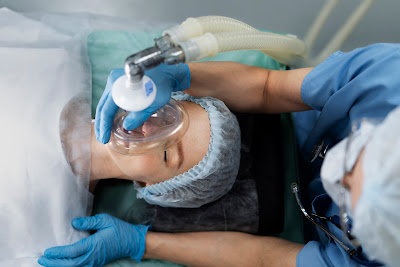Surviving the Storm: A Tactical Medical Roadmap for Disaster Assessment in Emergency Department
Fellowship in Emergency Medicine is essential as it guides step-by-step Medical Approach to Disaster Assessment and Emergency Department Patient Management Catastrophes, whether normal or man-made, present novel difficulties to crisis divisions (EDs), requiring a precise and therapeutically sound way to deal with guarantee viable assessment and the board of patients. Therefore, Fellowship in Emergency Medicine in India specifies the high-level clinical systems vital for exploring these basic circumstances:
First Evaluation of Medical Needs: • Quickly upon notice of a catastrophe, ED faculty start a fast evaluation to decide the clinical necessities of the circumstance. • Survey the sort and degree of wounds, potential irresistible infection dangers, and accessible clinical assets to illuminate resulting activities.
Assigning roles to Healthcare Providers: • Assign groups inside the ED, appointing explicit jobs and obligations to each colleague. • Assign staff for emergency, treatment, coordination of care, and correspondence with outside organizations.
Use Progressed Emergency Frameworks: • Execute progressed emergency frameworks like the Straightforward Emergency and Fast Treatment (Begin) or the Changed Early Admonition Score (MEWS). • Focus on patients in light of the seriousness of their wounds and clinical requirements, guaranteeing ideal asset assignment and treatment results.
Distribution of Clinical Assets: • Decisively allot clinical assets, including work force, supplies, and hardware, to oversee patient consideration really. • Guarantee satisfactory staffing levels and adequate clinical supplies to fulfill the needs of the debacle circumstance.
Give Quick Clinical Interventions: • Regulate quick clinical mediations to balance out patients with perilous wounds or conditions. • Perform cardiopulmonary revival (CPR), discharge control, aviation routes the executives, and other basic intercessions as the need might arise.
Examine and Respond to Psychological Needs: • Distinguish and address mental requirements among patients and their families impacted by the calamity. • Give mental medical aid, guiding, and support to mitigate injury and trouble and advance mental strength.
Coordinate with Specialty Administrations: • Coordinate with specialty administrations inside the clinic, like injury medical procedure, escalated care, and irresistible illness the board. • Work with convenient and fitting consideration for patients with complex clinical necessities, including careful intercessions and specific medicines.
Speak with Outside Offices: • Communicate openly with outside organizations, such as public health departments, emergency medical services (EMS), and other healthcare facilities. • Coordinate patient exchanges, asset sharing, and situational updates to streamline patient consideration and asset usage.
Screen Patient Stream and Limit: • Constantly screen patient stream and limit inside the ED, changing emergency needs, treatment conventions, and asset distribution on a case-by-case basis. • Guarantee effective patient throughput while keeping up with nature of care and security norms.
Direct Post-Disaster Interviewing and Assessment: • After the initial shock and reaction, lead careful post-op interviews and assessments to survey the viability of clinical mediations. • Distinguish regions for development, refine conventions, and upgrade readiness for future crises in view of examples gained from the occasion.
Online Fellowship Course in Emergency Medicine India teaches the clinical way to deal with catastrophe assessment and patient administration, crisis division faculty can really answer emergencies, give opportune and fitting clinical consideration, and relieve the effect of fiascos on general wellbeing and security.
So, after completing a Fellowship Course in Emergency Medicine by Medvantage, it guarantees that EDs are ready to deal with the difficulties presented by any disaster while focusing on better patients’ recovery and results using the most efficient methodology.



For career-driven aspirants, MRCP Coaching in Delhi at Dr. Bhatia Academy is the ideal choice — practical, focused, and result-oriented.
ReplyDelete